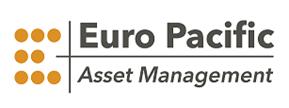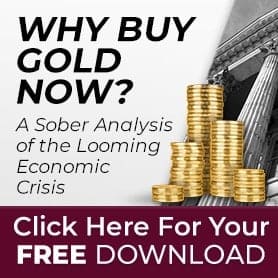January 19, 2018
Traders Still Ignoring Ominous Warning Signs
We closed the week with more gains on Wall Street as stock traders continue to ignore all the ominous warning signs that have been flashing. The S&P Composite and the NASDAQ both hitting new record highs today. The Dow, not a record high, but positive on the day, closing above 26,000 for the week for the first time ever.
Important Warning Signs in the Bond Market
But most importantly, what the market is ignoring is what is happening in the bond market. The bond market fell again; the yield on the 10-year rose. The high yield was 2.46, we closed at 2.639. These are the highest yields that we’ve had on the 10-year since July of 2014.
The stock market has gone up a lot since then, I think about a 45% increase in the S&P 500. Earnings are only up around 6%. So you had a massive increase in the stock market. And a lot of the justification for that valuation, because obviously, valuations have risen sharply, have been based on lower interest rates. Well, they’re not lower anymore, they’re back exactly were they were in July of 2014.
Take a Look at the 10-Year Treasury
But what’s more ominous is not where they are, but where they are headed. That’s the thing. These rates are still very low; 2.639. We’re very close to breaking a key number. I think the bond market looks like it’s going a lot lower. To me, this looks like it’s it. So I think we’re going to break through 3% on the 10-year relatively soon, maybe by next month. I think if we take out 3.75%, it’s a quick move up to 4%. Now the last time we had a 4% yield on the 10-year was before the 2008 financial crisis. Basically, that was the yield that broke the camel’s back.
Interest Rates vs Treasury Yields
Remember, the financial crisis was triggered by rising interest rates on the debt that had been accumulated in the prior years as a result of Alan Greenspan keeping interest rates at 1% for a year and a half. And then, slowly raising them back up over the course of another year and a half. So as the Fed was moving interest rates up at a measured pace, by the time they got rates back up to 5%, the yield on the 10-year was about 4%. That’s about as high as it was able to go.
Bubble Precariously Balanced on Interest Rates
Now, you have to figure that today, given that we have so much more debt now than we had in 2008 that the breaking point for the markets is actually far below 4%. If 4% was enough to prick the bubble in ’08, a much smaller pin would prick this more enormous bubble. If we could not withstand a 4% 10-year in 2008, what was the high in the stock market in 2008? we were the highs of today. The Dow was around 12,000. So if interest rates get back to where they were, how do you justify it at 25,000?
Podcast: Download










